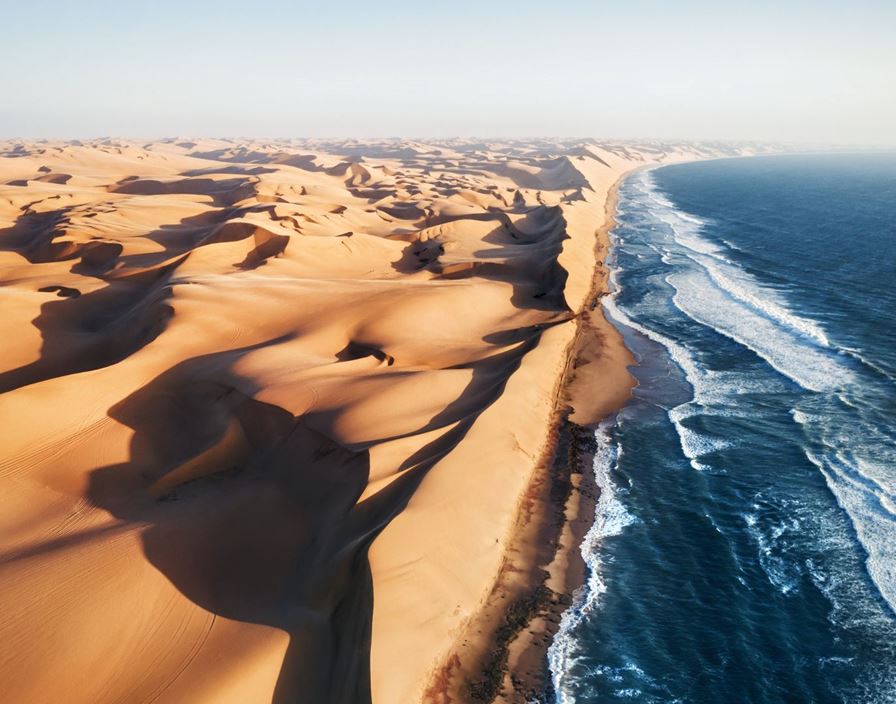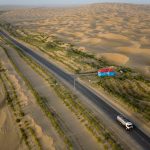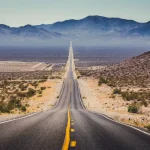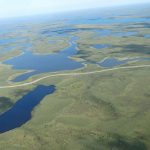Nestled along the rugged shores of Namibia’s Atlantic coastline lies one of the world’s most remote and mysterious destinations: the Skeleton Coast. And at the heart of this enigmatic region is the Skeleton Coast Road, a rugged stretch of highway that winds its way through desolate landscapes, ancient shipwrecks, and hauntingly beautiful scenery. The Skeleton Coast is a 500-kilometre (310-mile) stretch of the Atlantic coast of Namibia. Join us as we embark on an adventure along the Skeleton Coast Road, exploring its wonders and uncovering its secrets.
| Country | Namibia |
| Lenght | 500 km (310 mi) |
| Coordinates | 21°36′44″S 14°32′24″E |
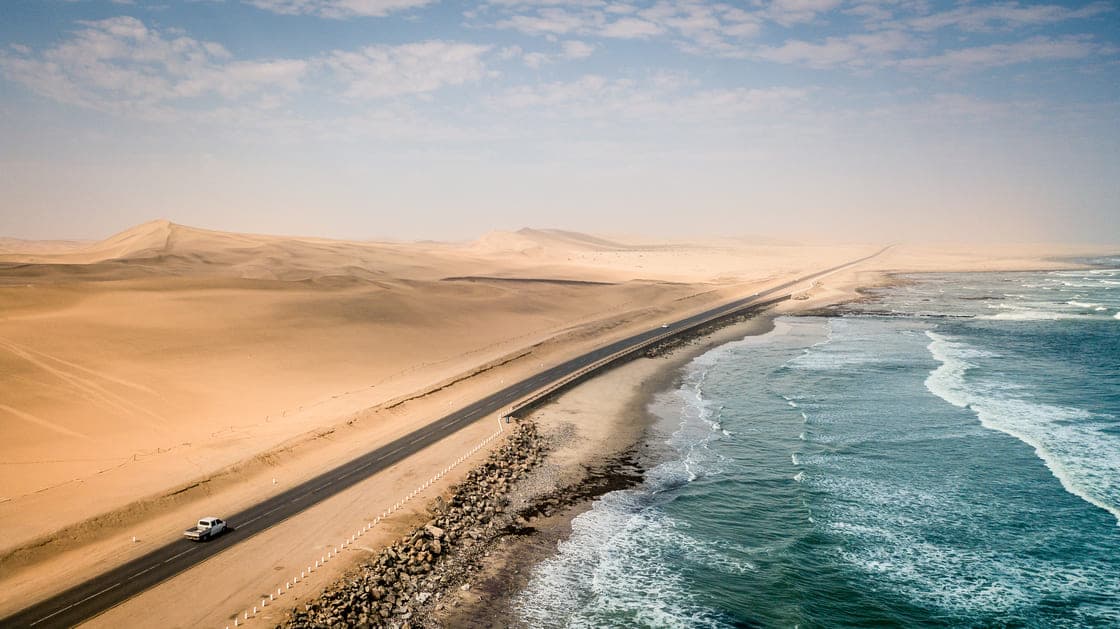
When to Go
The best time to embark on a journey along the Skeleton Coast Road is during the dry season, which typically runs from May to October. During this time, the weather is cooler, and the risk of encountering heavy rains or flooding is minimal. Additionally, wildlife viewing opportunities are abundant, with the chance to spot desert-adapted elephants, lions, and seals along the coast.

What to Visit

Kolmanskop Ghost Town
Along the Skeleton Coast Road, travelers will encounter a wealth of attractions and points of interest waiting to be explored. Highlights include:
Cape Cross Seal Reserve: Home to one of the largest colonies of Cape fur seals in the world, Cape Cross Seal Reserve is a must-visit destination along the Skeleton Coast Road. Witness thousands of seals basking in the sun on the sandy shores, creating a cacophony of sights and sounds that is truly unforgettable.
Ships: Embark on a journey along the Skeleton Coast to discover the remnants of ships that have met their fate amidst the treacherous waters and harsh conditions. Witness rusted hulls, weathered masts, and the eerie presence of these maritime relics, each with its own story to tell.
Namibia Desert Dunes: Marvel at the towering sand dunes of the Namib Desert, which stretch as far as the eye can see along the Skeleton Coast Road. Climb to the top of Dune 7, one of the tallest dunes in the world, for panoramic views of the surrounding desert landscape.
Skeleton Coast National Park: Explore the otherworldly landscapes of Skeleton Coast National Park, where vast salt pans, rocky outcrops, and desert plains collide. Keep an eye out for desert-adapted wildlife, including oryx, springbok, and jackals, as you traverse this remote and rugged wilderness.
Cape Cross Seal Reserve: Embark on a wildlife adventure at Cape Cross Seal Reserve, home to the world’s largest colony of Cape fur seals, estimated at over 200,000 individuals. Witness their playful antics, boisterous barks, and fascinating social dynamics as they bask in the sun or frolic in the waves.
Kolmanskop Ghost Town: Step back in time at Kolmanskop, a hauntingly beautiful ghost town once thriving with diamond miners. Explore the deserted buildings, adorned with Art Deco architecture, and imagine the bustling life that once filled these streets. Discover preserved artifacts, including furniture, machinery, and personal belongings, offering a glimpse into the town’s captivating history.
Ugab River Trail: Embark on a challenging yet rewarding hike along the Ugab River Trail, traversing the heart of the Namib Desert. Experience the raw beauty of this vast landscape, encounter diverse wildlife like kudu, oryx, and desert foxes, and enjoy panoramic views from the Hoanib Canyon, a natural wonder sculpted by wind and water.
Desert Surfing: Challenge your surfing skills on the Skeleton Coast’s powerful waves, known for their consistent swells and dramatic coastline. Experienced surfers relish the thrill of riding these exhilarating waves, while beginners can enjoy the gentler breaks.Wildlife Photography: Capture the essence of the Skeleton Coast’s diverse wildlife through captivating photography. Capture the seals basking on the shore, the desert elephants gracefully traversing the dunes, or the elusive gemsbok grazing in the dry plains. These images will become cherished souvenirs of your unforgettable adventure.
Stargazing: Escape the city lights and immerse yourself in the pristine darkness of the Skeleton Coast. Under the vast, star-studded sky, witness the Milky Way’s swirling arms, constellations come alive, and the mesmerizing beauty of the cosmos.
Keep in mind while travelling the Skeleton Coast Road
The harsh desert environment, extreme temperatures, and limited access to services make it essential to come prepared with ample supplies, including water, food, and fuel. Additionally, be mindful of changing weather conditions, especially during the rainy season, when flash floods and impassable roads can pose significant hazards.
- Hire a 4×4 vehicle: The Skeleton Coast is not for inexperienced drivers. The roads are often sandy, rough, and unpaved, and you’ll need a reliable 4×4 vehicle to navigate them safely.
- Travel in a convoy: If possible, travel in a convoy with other vehicles to increase visibility and safety in case of accidents or breakdowns.
- Check the weather forecast: The weather on the Skeleton Coast can change rapidly, and fog is a common occurrence. Always check the weather forecast before you set off and be prepared to change your plans if necessary. Be prepared for anything. Pack warm clothes, sunscreen, and rain gear.
- Fill up with fuel and water before you leave: There are few fuel stations on the Skeleton Coast, so it’s important to fill up with fuel before you start your journey. You should also carry plenty of water, as it can be difficult to find along the way.
- Travel during daylight hours: Avoid driving at night, as the roads are not well lit and the fog can make it difficult to see.
- Be aware of wildlife: There are a few animals that you may encounter on the Skeleton Coast, such as elephants, lions, and desert foxes. Be careful not to approach any animals, and keep your distance.
- Avoid Driving off-road: The dunes and sand flats on the Skeleton Coast are fragile ecosystems. It’s important to stay on the designated roads to prevent damage to the environment.
- Avoid Taking souvenirs: It’s illegal to remove any artifacts or souvenirs from the Skeleton Coast. This includes shipwreck debris, bones, and any other natural material.
- Take plenty of water: It’s important to stay hydrated in the desert climate. Carry plenty of water with you, and drink regularly.
Remember, the Skeleton Coast is a beautiful and fascinating place, but it’s important to respect the environment and take precautions to stay safe. By following these tips, you can have an unforgettable adventure while ensuring your safety and the well-being of the region.
History
Origins of the “Skeleton Coast” Name
The name “Skeleton Coast” is thought to have originated in the 19th century, when the abundance of shipwrecks along its shores became apparent to European explorers. The treacherous combination of strong currents, shifting sandbanks, and fog made this coast a graveyard for ships for centuries. The first recorded shipwreck on the Skeleton Coast was in 1535, when a Portuguese ship was wrecked on the rocks near what is now Lüderitz. Since then, hundreds of ships have been lost along the coast, including a number of famous vessels such as the Eduard Bohlen, the Dunedin Star, and the Tong Taw.
Maritime History
The Skeleton Coast has played a significant role in maritime history, both as a source of danger and as a source of trade. The coast’s rich guano deposits, which were used as fertilizer, attracted whalers and seal hunters in the 19th century. In the 20th century, the coast became a popular route for smugglers and diamond traders. Today, the coast is still used for shipping, but it is also a popular tourist destination.
Cultural Significance
The Skeleton Coast has a deep cultural significance for the Khoekhoe people, the indigenous inhabitants of the region. The Khoekhoe believe that the spirits of the dead live on in the desert, and they often visit the coast to pay their respects to their ancestors. The coast is also a sacred place for many other cultures, and it is often associated with stories of ghosts, shipwrecks, and lost treasure.
In addition to its cultural significance, the Skeleton Coast is also home to a unique ecosystem. The coast is home to a variety of plants and animals that have adapted to the harsh desert environment. These include the Welwitschia mirabilis, a plant that can live for thousands of years, and the oryx, a large antelope that is well adapted to desert life.
Tours & Safaris companies and Car rentals
Here are some companies in Namibia that rent 4×4 cars:
- Travel Namibia 4X4 Car Rentals (101 Hidipo Hamutenya Street Olympia Windhoek, 10005, Windhoek, Namibia) has a 4.9-star rating on Google Maps.
- Zambezi Car Rental | 4×4 Hire | Windhoek Namibia (No 1 Christa Davis St, Windhoek, Namibia) has a 4.9-star rating on Google Maps.
- AfriCar Car Hire / deutschsprachige 4×4 Autovermietung Windhoek – Namibia (7 Tienie Louw Street, Windhoek, Namibia) has a 4.8-star rating on Google Maps.
- Go Rent Namibia 4×4 Rentals (10020, Luxury Hill, 6 Kasteel St, Windhoek, Namibia) has a 5-star rating on Google Maps.
- Jireh 4×4 Rental Namibia (52 Aschenborn Street, Windhoek, Namibia) has a 4.9-star rating on Google Maps.
Here are some of the top-rated companies that offer guided trips in Namibia:
- Namibia Tours & Safaris (Pandion Building, 2nd Floor, Sam Nujoma Ave, Swakopmund, Namibia) has a 4.7-star rating on Google Maps.
- Chameleon Safaris (Ferry Street, Windhoek, Namibia) has a 4.9-star rating on Google Maps.
- Suricate Tours and Safaris (No 46 TV Moore Street, Windhoek, Namibia) has a 5-star rating on Google Maps.
- People Tour and Safaris Namibia (20512, Unit 2 Lazarett 51 street, Windhuk, Namibia) has a 4.9-star rating on Google Maps.
- Don Tours and Safaris Namibia (24 Penguin Street, Windhoek, Namibia) has a 4.7-star rating on Google Maps


